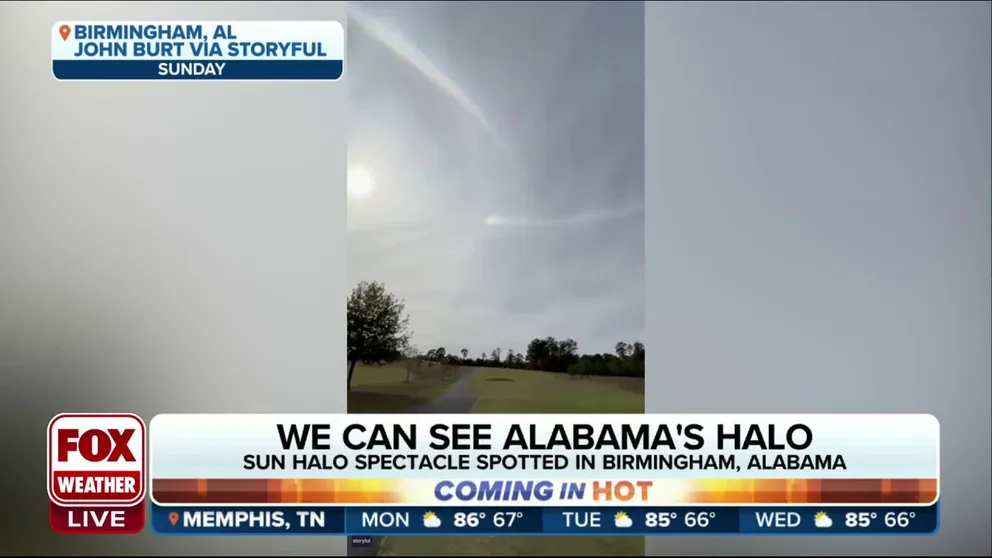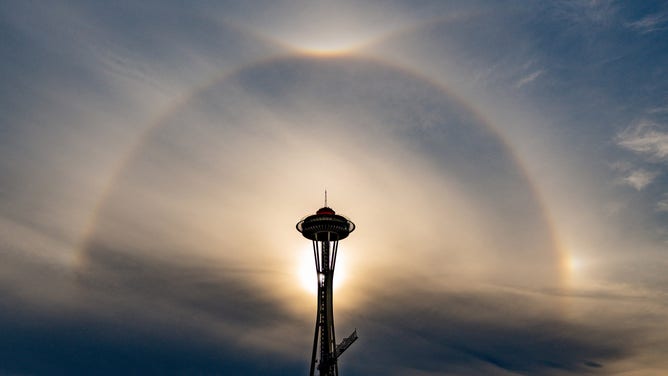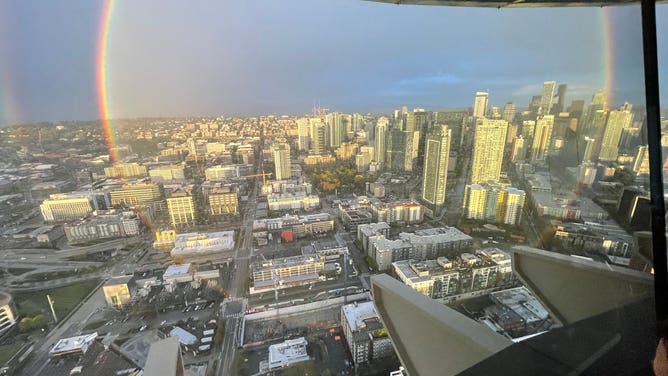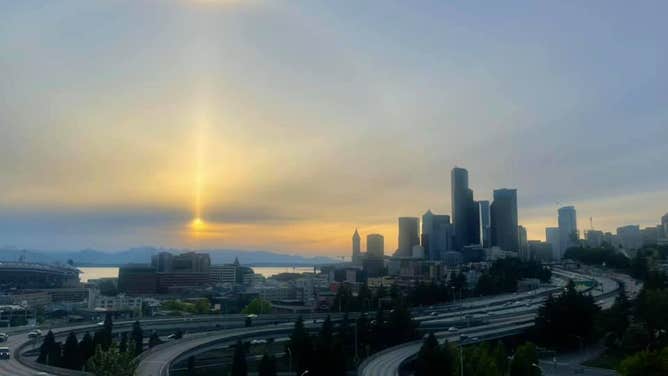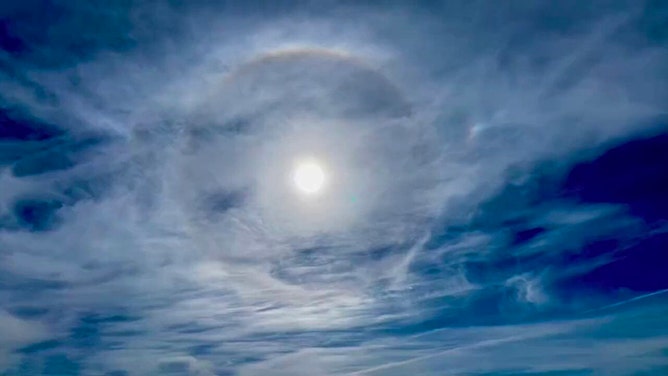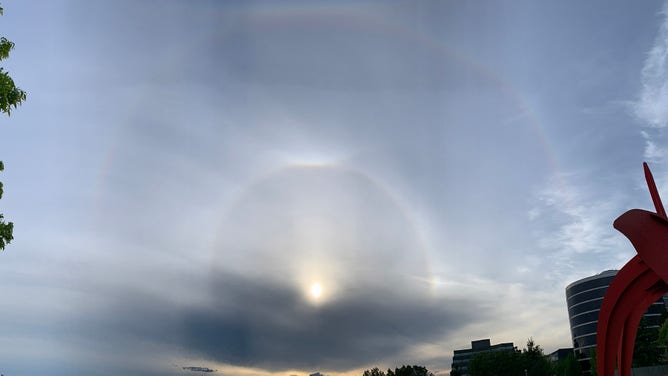What causes a halo around the Sun?
Mix sunlight with some ice crystals at just the right altitude and angle, and you can get these stunning displays of atmospheric optics.
See it: Halos over Alabama
Thin icy clouds treated folks near Birmingham, Alabama with sun halos, rimming the Sun.
Have you ever looked up near the Sun and spotted a ring of color, as if a rainbow is surrounding the Sun?
The phenomenon is technically not a rainbow. However, just like its colorful counterpart, it is based on sunlight refraction.
WHAT IS A SUN DOG? RAINBOW 'QUOTES' AROUND THE SUN
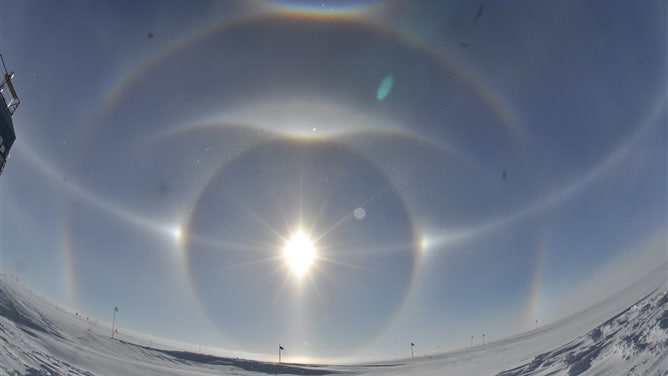
Various Sun halos as spotted at South Pole Station, Antarctica in January 2012.
(Lieutenant Heather Moe / NOAA Corps)
Only in this case, the precipitation is frozen.
"Some people might call it a rainbow around the Sun, but it's actually caused by ice crystals," said scientist Michael Kavulich with the National Center for Atmospheric Research.
That difference is critical. Raindrops are spherical, but ice crystals have six sides, similar to snowflakes. This refracts sunlight at a different angle.
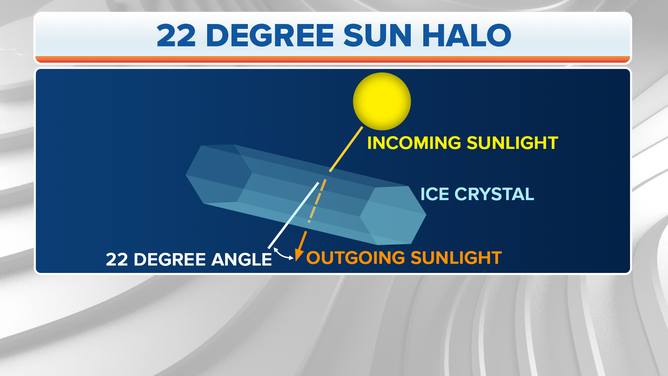
(FOX Weather)
"(Rainbows) are absolutely beautiful," Kavulich said. "But they're fairly boring compared to other kind of atmospheric optic phenomena because the raindrops are a sphere, and so the angles are always going to be the same … no matter what angle that raindrop is oriented in."
Ice crystals, on the other hand, are of different shapes and sizes.
"Just like rain, sunlight will go into the ice, and it will be refracted, and so the red and blue light will be refracted at slightly different angles," Kavulich said. "And in this case, because it's ice, it happens to be at a 22-degree angle."
MORE THAN PRETTY PHOTOS: THE SCIENCE BEHIND COLORFUL SUNRISES, SUNSETS
Because those crystals are in all sorts of angles and orientations, "you get the light coming from all around the Sun rather than, say, one particular spot," Kavulich said.
That's how you get a halo that encircles the Sun, provided those icy clouds surround it. The ring sits at a 22-degree angle, and it's how that ring gets its name: A "22-degree halo."
WHAT IS A SUN PILLAR? A BEAM OR RAY OF LIGHT FROM THE SUN
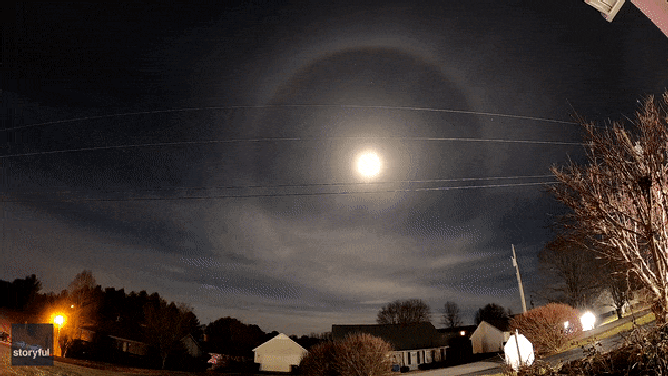
A 22 degree moon halo is spotted in London, Kentucky on Feb. 4, 2023.
(Johnnie Nicholson via Storyful / FOX Weather)
See the halo, find an umbrella?
Aside from making a colorful display, a halo could signify more traditional rainbow sightings will soon follow.
In areas that see mid-latitude storms, like the U.S., halos are noted as signals of rain coming within a day.
"It does have some grounding in truth," Kavulich said.
As a storm's low-pressure system approaches, the leading warm front will have warm air riding up over colder air in place, creating clouds at various heights ahead of the storm, Kavulich said.
SUN-SATIONAL SIGHT: SEATTLE AREA GETS COLORFUL SIGNAL THAT RAIN IS ON THE WAY
Photographer captures halo 'sunbow' over San Diego
A San Diego-based photographer
"And the furthest along (the front) you get, you get very high up in the atmosphere (where) it's always below freezing, so you're always going to have ice crystals," he said. "And so in that regard … you may have a higher chance to see a halo around the Sun because there are these high, thin clouds in the atmosphere that are made of ice," Kavulich said.
"In truth, it's probably not more reliable than listening to your local meteorologist," Kavulich continued. "But it can alert you that there's maybe a change in the weather coming because there are many different ways that high thin clouds can form."
